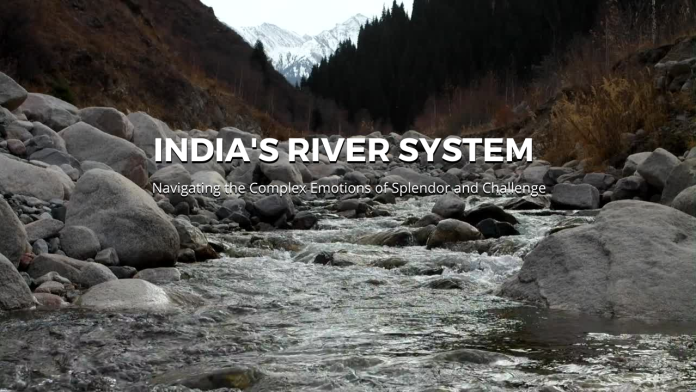Explore the beauty and adversity of India’s river system in our in-depth article. Learn about the spiritual significance and ecological challenges faced by the rivers in India.
India’s River System: Introduction
India’s river system is a vital part of its geography and culture. With a rich and diverse network of rivers, India’s river systems have played a significant role in the country’s history, ecology, and socio-economic development. In this blog, we will explore the multifaceted world of rivers in India, delving into their cultural significance, ecological importance, and the challenges they face in the modern era.
The Sacred Rivers
India is often referred to as the land of sacred rivers. The Ganges, Yamuna, and Brahmaputra, among others, hold deep religious and spiritual significance for millions of Indians. Pilgrims flock to the banks of these rivers to perform rituals, take holy dips, and immerse themselves in the divine aura.
Ecological Significance
The river system in India is not only a source of spirituality but also of life. These rivers support a wide range of ecosystems and biodiversity. They provide water for irrigation, habitat for aquatic life, and recharge groundwater resources. The fertile alluvial plains along the banks of these rivers have made them the cradle of Indian civilization, fostering agriculture and urbanization.
The Ganges River
The Ganges, often called the ‘Ganga,’ is perhaps the most revered river in India. It originates from the Gangotri glacier in the Himalayas and flows through the northern plains. Known for its relentless flow and purity, the Ganges is a lifeline for millions of people, serving as a source of drinking water, irrigation, and transportation.
The Brahmaputra River
The Brahmaputra, originating in Tibet and flowing through India and Bangladesh, is one of the world’s major river systems. It provides water to the fertile plains of Assam and Bangladesh, and its basin is a biodiversity hotspot, home to numerous species of flora and fauna.
Challenges Faced by Indian Rivers
Despite their significance, India’s rivers face numerous challenges in the modern era.
Pollution
One of the most pressing issues is pollution. Rapid urbanization and industrialization have led to the discharge of pollutants into the rivers, degrading water quality and harming aquatic life.
Over-extraction
Excessive withdrawal of water for irrigation and industrial use has resulted in reduced flow in many rivers. This over-extraction disrupts the ecological balance and can lead to water scarcity in certain areas.
Dams and Deforestation
Dams and deforestation along river basins have further aggravated the problems. Dams disrupt natural river flow, while deforestation reduces the river’s capacity to retain water, leading to increased flooding during the monsoon.
Conservation Efforts
Efforts are being made to address these challenges and conserve India’s river systems.
Ganga Action Plan
The Indian government has launched the ‘Namami Gange‘ project to rejuvenate the Ganges and its tributaries. This initiative focuses on sewage treatment, riverfront development, and afforestation.
River Clean-Up Campaigns
Various NGOs and community-based organizations are actively involved in cleaning and rejuvenating rivers. They organize clean-up drives and awareness programs to engage the public.
Afforestation
Afforestation along riverbanks is essential for soil conservation and maintaining river ecosystems. Planting trees along riverbanks can help reduce erosion and filter pollutants.
Conclusion
India’s river system is not just a geographical feature; it’s a lifeline, a source of spirituality, and a key component of the ecosystem. Preserving these vital water bodies is crucial for the country’s future. As we address the challenges faced by our rivers, we must remember their importance and work collectively to ensure their sustenance for generations to come.
FAQs
1. Why are Indian rivers considered sacred?
Indian rivers like the Ganges hold deep religious and spiritual significance due to their mention in ancient texts and their role in rituals and traditions.
2. How can I contribute to river conservation in India?
You can participate in local clean-up drives, support organizations working for river conservation, and promote responsible water use.
3. What is the impact of pollution on Indian rivers?
Pollution harms water quality, affects aquatic life, and can have long-term consequences for the environment and public health.
4. Are there any government initiatives to clean Indian rivers?
Yes, the Indian government has launched initiatives like ‘Namami Gange’ to clean and rejuvenate rivers.
5. What role do rivers play in Indian agriculture?
Rivers provide water for irrigation, making agriculture possible in many regions. They also replenish groundwater, contributing to sustainable farming practices.



